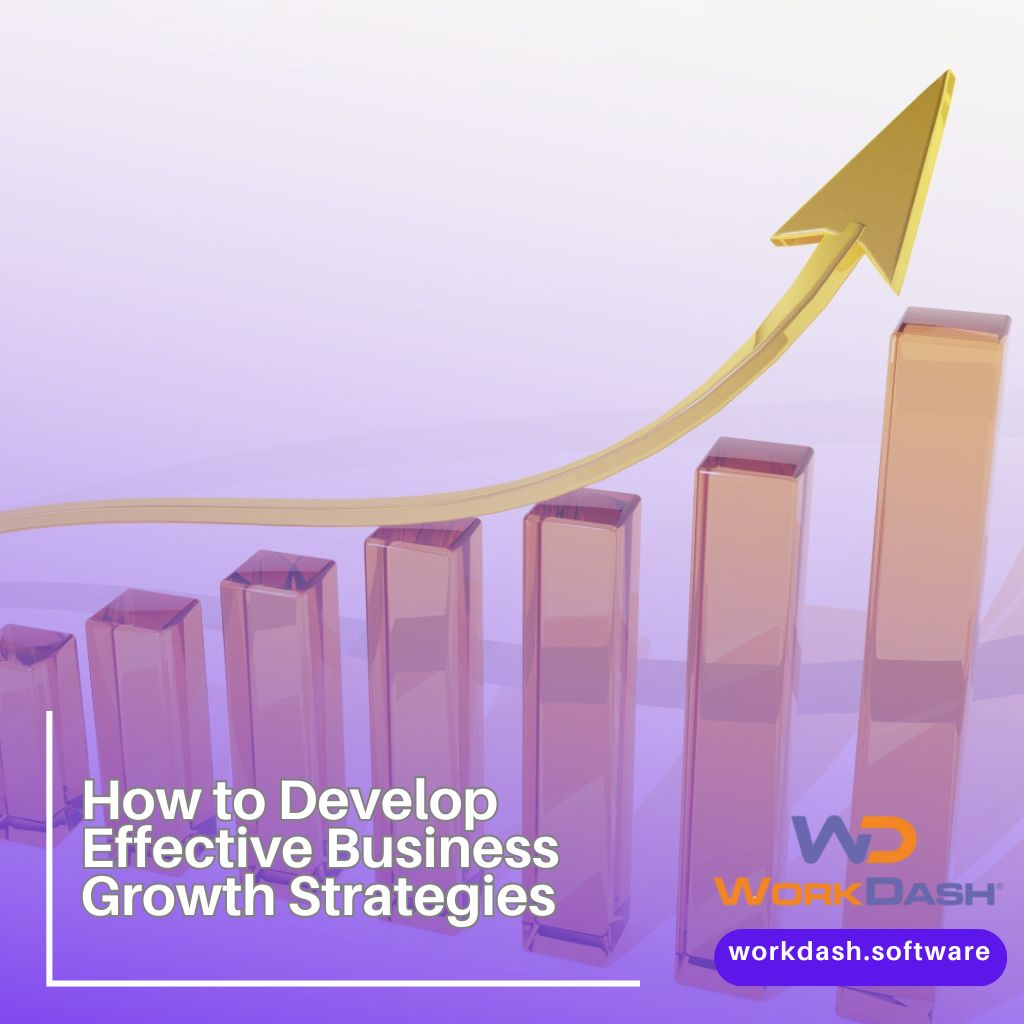Table of Contents
A business growth strategy is a comprehensive plan outlining the key steps a company will take to expand its operations, increase revenue, and enhance market reach. It involves assessing financial performance, market position, and industry trends to set clear, strategic objectives that drive sustainable organic growth over time.
Why Do You Need a Business Growth Strategy?
A well-defined business growth strategy is essential for any company looking to expand its customer base, increase revenue, and stay competitive in an evolving market.
Whether you’re launching a new business, attracting new patients in the healthcare sector, or expanding an established company, having a structured approach ensures sustainable growth and profitability.
Key Benefits of a Business Growth Strategy
-
Attracting New Customers
A strategic business development plan helps businesses a identify and engage new audiences. Whether through targeted marketing, referrals, or improved customer experience, a growth strategy ensures you reach potential customers or new patients effectively.
-
Enhancing Market Position
In a competitive landscape, business growth strategies help differentiate your brand. By refining your products and services, optimising content marketing, and expanding into new markets, you can build a successful business and increase customer loyalty through effective strategies for growth.
-
Increasing Revenue and Profitability
Growth strategies drive revenue growth by introducing new distribution channels, developing innovative offerings, and optimising existing operations. A structured plan ensures you capitalise on growth opportunities while managing cash flow efficiently.
-
Adapting to Market Changes
Businesses need to remain agile in response to industry shifts. A successful growth strategy includes market research, data-driven insights, and adaptable tactics to stay ahead of competitors and meet the evolving needs of your target audience. -
Building a Scalable Business Model
A strategic business development plan ensures your business is structured for long-term growth goals. By developing new products, improving internal processes, and enhancing customer experience, you create a scalable and resilient organisation. -
Maximising Customer Retention
Retaining existing customers or patients is just as important as acquiring new ones. Personalised engagement, high-quality service, and strategic follow-ups increase customer lifetime value and foster business sustainability.
1. Understand Your Current Situation
Market Research
Thoroughly analyse your target market, understand industry trends, and assess your competitors. Identify customer needs, preferences, and emerging opportunities to stay ahead of the competition. Effective market research helps refine your business growth strategy and ensures you’re targeting the right audience.
SWOT Analysis
Conduct a SWOT analysis (Strengths, Weaknesses, Opportunities, and Threats) to evaluate your business’s internal capabilities and external environment. This will help you identify areas where you excel, potential risks, and untapped growth opportunities.
Identify Your Value Proposition
Clearly define what makes your business unique and valuable to customers. Your value proposition should answer the question: Why should customers choose your products or services over competitors?
Understand Your Current Revenue Streams
Analyse your existing revenue sources and identify areas with potential for expansion. Are there additional products or services you can offer? Can you optimise pricing or introduce new market opportunities? Diversifying revenue streams can significantly boost growth and profitability.
2. Define Your Goals and Strategies
Set Clear, Measurable GoalsEstablish SMART goals (Specific, Measurable, Achievable, Relevant, and Time-bound) that align with your long-term business growth strategy. Clearly defined objectives will help measure progress and guide decision-making.
Choose a Growth Strategy
Consider different growth strategies based on your business goals:
Market Penetration – Increase market share within your existing audience through competitive pricing, enhanced marketing efforts, or improved customer experience.
Product Development – Introduce new products or services that cater to evolving customer needs.
Market Development – Expand into new geographical locations or target a different customer segment.
Diversification – Explore new industries or markets unrelated to your current business to reduce risk and increase revenue.
Strategic Partnerships – Collaborate with other businesses to leverage resources, technology, and expertise for mutual growth.
Create a Strategic Growth PlanDevelop a step-by-step business plan outlining the specific actions, timelines, and resources required to achieve your growth objectives. This plan should be adaptable, allowing for flexibility as market conditions change.
3. Implement and Monitor Progress
Allocate Resources Effectively
Determine how to distribute key resources—budget, personnel, and time—to support your chosen business development strategy. Investing in technology, automation, and skilled employees can significantly enhance efficiency.
Monitor Key Performance Indicators (KPIs)
Track measurable KPIs such as revenue growth, customer acquisition rates, and market share expansion. Regular analysis will help identify areas requiring improvement and refine strategies accordingly.
Communicate Strategic Objectives to Your Team
Ensure all employees understand the company’s business development strategy and their role in executing it. A well-informed workforce is more engaged and motivated to contribute to business success.
Stay Agile and Adapt to Market Changes
The business landscape is constantly evolving. Be prepared to adjust your strategies in response to shifting market demands, economic trends, and consumer behaviour. Flexibility is key to sustaining consistent growth.
Leverage Automation and Testing
Test new business strategies and refine processes to ensure their effectiveness. Implement automation tools to enhance productivity, streamline workflows, and eliminate repetitive tasks, allowing you to focus on high-impact growth initiatives
Turn Your Growth Vision into Reality with WorkDash
Developing a successful growth strategy requires the right tools to manage operations, streamline processes, and track performance effectively. WorkDash, a leading business management software, empowers companies to optimise their workflows, improve efficiency, and align their daily operations with long-term growth objectives.
With features such as job management, invoicing, workforce management, and CRM tools, WorkDash provides the resources necessary to execute your strategic business development plan. Whether you’re expanding into new markets, launching new products, or seeking to improve customer experience, WorkDash supports your journey to sustainable business growth.
Take your business growth strategy to the next level—explore how WorkDash can help drive success today.





